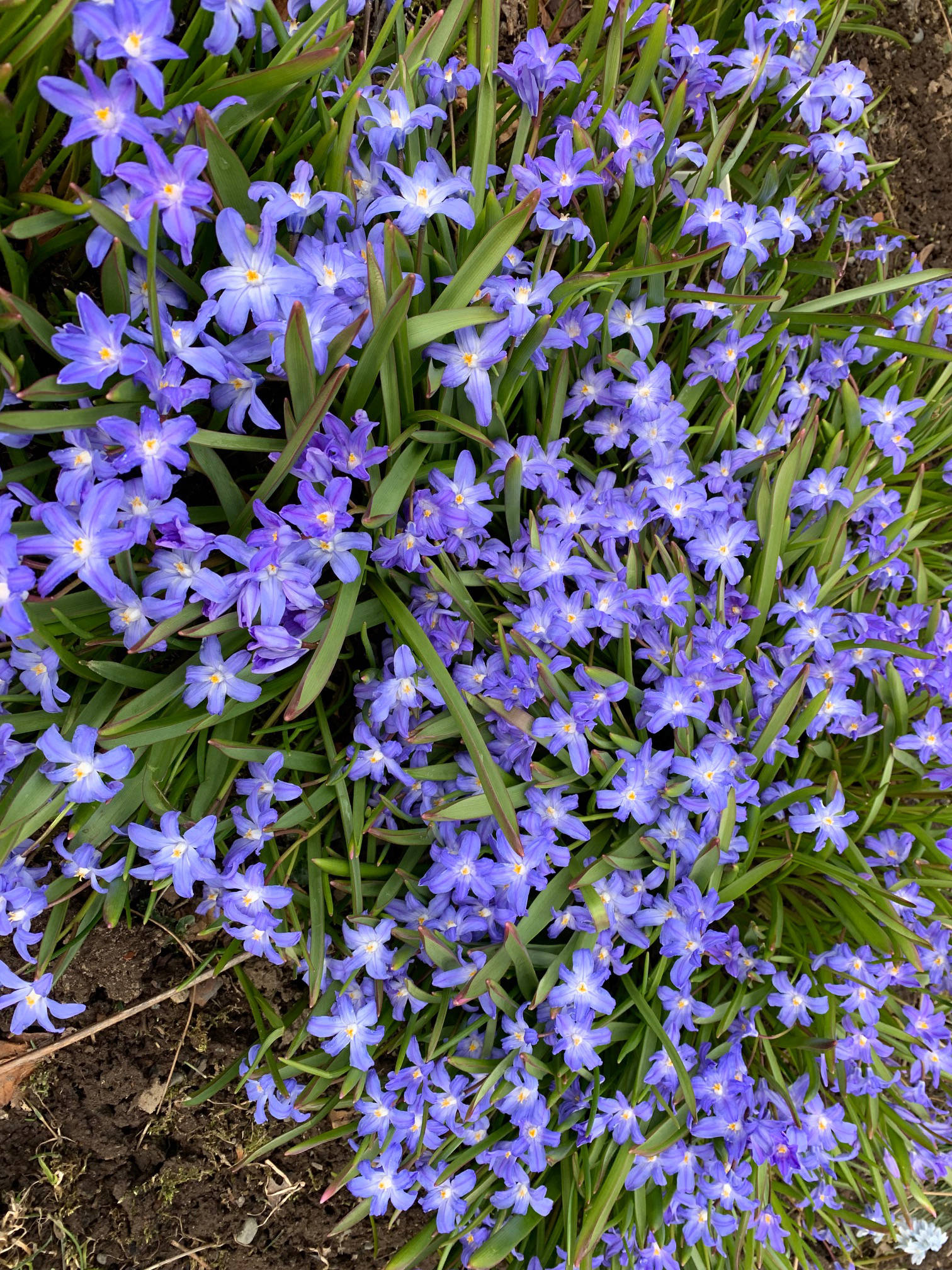This is being written Sunday evening. The wind is howling and the snow keeps coming — a typical spring storm. All the lovely in bloom minor bulbs are under about 3 inches of wet snow. Not a problem. Really. No problem at all.
The weather forecast looks favorable for the coming week, but who knows. The important thing here is the temperatures are actually warmish. The buds on the lilacs and emerging leaves on the deciduous trees and shrubs shouldn’t be affected by all this drama. There have been Aprils and Mays with the temperatures dropping into the low teens and that bodes trouble. So far we are avoiding that scenario. Keep your fingers crossed.
Such a promising March; so much got accomplished in the garden. Divisions were made and parceled out to likely recipients. The greenhouse is planted and thriving. Really it used to be the norm to drag the hose through the snow to water the greenhouse. Keep telling yourself that this weather is no big deal, that the snow is putting nitrogen into the soil, that spring will come again, that all will be well.
The filipendula kehome got completely removed and divided into four. Use a saw if yours is as tightly packed as mine. Each of the quarters could be divided into four again. The lucky gardeners who were ever so prompt to pick up their share now have treasures that will grace their landscape. And I have one less that was attempting to dominate the dwarf red twigged dogwoods that were planted last spring. Now there’s a win-win situation.
You will know if your perennials need division if they weren’t as bloomy as they can be last summer or the center is empty or tatty. Did you make a note of that? Sharpen your shovel, dig up the whole plant and go from there. I often use a saw to make the divisions. It seems rather brutal and the plant will suffer a bit, but in the long run, it will thank you. You will be rewarded with more blooms and an overall healthy looking plant that once again fits the spot where it was originally planted.
Lets talk about larches. These are a deciduous conifer. They shed their leaves in the fall after turning a bright gold. I love these trees. There are those who look at a larch in the winter and see a dead tree, but not me.
I see a soft gold all winter long. In the spring that gold brightens with each day and tiny red blooms (at least I think they are blooms) spring out, eventually becoming a round cone. The whole effect is a fairy tree. Lovely. They are fast growing and long lived. Keep them protected from the moose until they are tall enough to withstand an attack. But do add them to your garden.
When planting trees and shrubs we need to keep in mind the mature size of these plants. Everything I planted here twenty years ago is either too close to the house, each other, the deck, the fence. Take your pick. Measure. Keep plants out from under the eaves of the house. There is nothing more annoying than standing around in the rain watering the plants under the eaves. Think this through.
I have been given a giant compliment and I really need to share it. Sandy stopped by this week (before the snow) and took a good look around the garden. She has been here several times over the years but this visit was different. She really and truly wanted to know how to grow food — wanted to know how I get the job done. What a delight. She has gardened in the past but let it go. She even has an attached greenhouse. Imagine. While here she studied the size and layout of the vegetable plot and the size of the tubs that the tomatoes are growing in. She is undaunted by the prospect of a compost pile, especially after seeing very happy tomatoes in the greenhouse. Sandy is actually going to garden. I consider this a success story.
There need to be more success stories. There is nothing like your very own vegetables that you have grown yourself, know what they have been fed (compost), harvested at peak perfection, and consumed or processed.
The lettuce and radishes are almost ready for harvest in the greenhouse. Our sorrel is already being added to salads and Francie has made sorrel soup twice this spring.
Think about this. This may be the sub-Arctic but we can grow quite an array of food. There is nothing more important for you to be doing.
Lay some cardboard right down on the grass, throw some topsoil on it and get planting.
Rosemary Fitzpatrick is a longtime Homer gardener and has been writing Kachemak Gardener since 1990.


